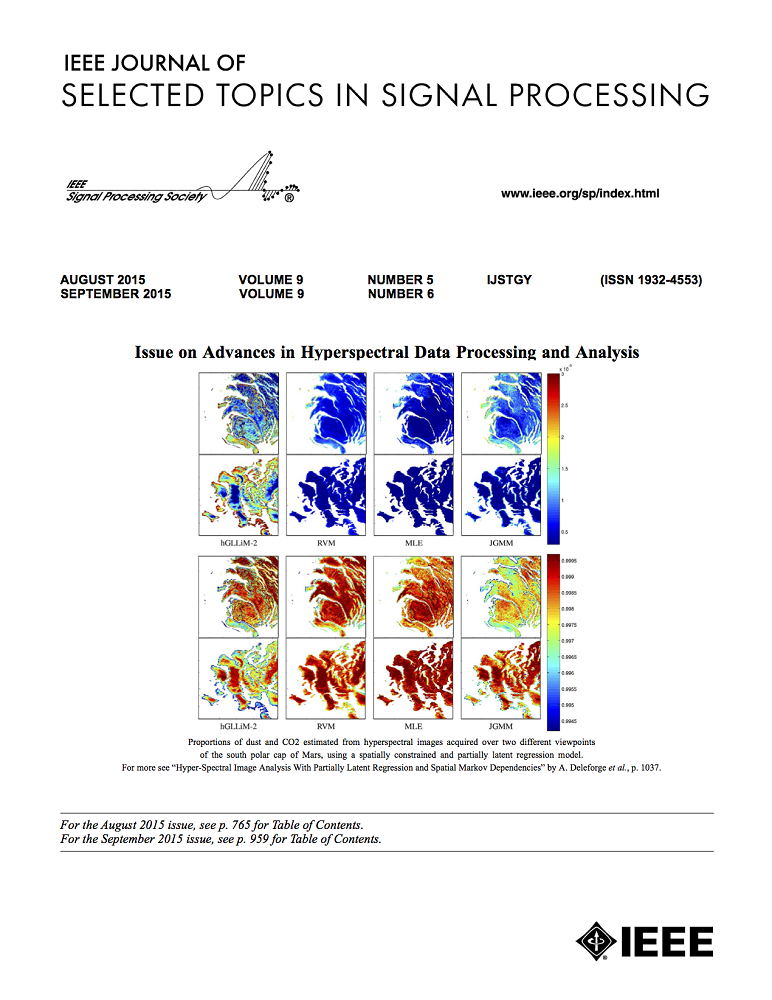多层计算系统中的分布式数字双胞胎迁移
IF 8.7
1区 工程技术
Q1 ENGINEERING, ELECTRICAL & ELECTRONIC
IEEE Journal of Selected Topics in Signal Processing
Pub Date : 2024-01-26
DOI:10.1109/JSTSP.2024.3359009
引用次数: 0
摘要
在网络边缘,多层计算框架为移动用户提供了高效的云计算和信号处理能力。在多层计算系统中部署数字孪生有助于实现用户与其虚拟对象之间超可靠、低延迟的交互。考虑到系统中的用户可能会在覆盖范围有限的边缘服务器之间漫游,并增加其数字孪生的数据同步延迟,因此解决数字孪生迁移问题以实现数字孪生与用户之间的实时同步至关重要。为此,我们提出了一个联合数字孪生迁移、通信和计算资源管理问题,以最小化数据同步延迟,其中考虑了时变网络状态和用户移动性。通过在确定性迁移策略下解耦边缘服务器,我们首先使用凸优化方法推导出每个服务器的最优通信和计算资源管理策略。对于不同服务器之间的数字孪生迁移问题,我们将其转换为分散的部分可观测马尔可夫决策过程(Dec-POMDP)。为了解决这个问题,我们提出了一种新颖的代理贡献多代理强化学习(AC-MARL)算法来实现用户的分布式数字孪生迁移,其中采用了反事实基线法来描述每个代理的贡献,并促进代理之间的合作。此外,我们利用嵌入矩阵对代理的行动和状态进行编码,以解决 AC-MARL 算法中高维状态下的可扩展性问题。基于两个真实世界出租车移动跟踪数据集的仿真结果表明,与基准方案相比,所提出的数字孪生迁移方案能够为用户减少 23%-30% 的数据同步延迟。本文章由计算机程序翻译,如有差异,请以英文原文为准。
Distributed Digital Twin Migration in Multi-Tier Computing Systems
At the network edges, the multi-tier computing framework provides mobile users with efficient cloud-like computing and signal processing capabilities. Deploying digital twins in the multi-tier computing system helps to realize ultra-reliable and low-latency interactions between users and their virtual objects. Considering users in the system may roam between edge servers with limited coverage and increase the data synchronization latency to their digital twins, it is crucial to address the digital twin migration problem to enable real-time synchronization between digital twins and users. To this end, we formulate a joint digital twin migration, communication and computation resource management problem to minimize the data synchronization latency, where the time-varying network states and user mobility are considered. By decoupling edge servers under a deterministic migration strategy, we first derive the optimal communication and computation resource management policies at each server using convex optimization methods. For the digital twin migration problem between different servers, we transform it as a decentralized partially observable Markov decision process (Dec-POMDP). To solve this problem, we propose a novel agent-contribution-enabled multi-agent reinforcement learning (AC-MARL) algorithm to enable distributed digital twin migration for users, in which the counterfactual baseline method is adopted to characterize the contribution of each agent and facilitate cooperation among agents. In addition, we utilize embedding matrices to code agents' actions and states to release the scalability issue under the high dimensional state in AC-MARL. Simulation results based on two real-world taxi mobility trace datasets show that the proposed digital twin migration scheme is able to reduce 23%–30% data synchronization latency for users compared to the benchmark schemes.
求助全文
通过发布文献求助,成功后即可免费获取论文全文。
去求助
来源期刊

IEEE Journal of Selected Topics in Signal Processing
工程技术-工程:电子与电气
CiteScore
19.00
自引率
1.30%
发文量
135
审稿时长
3 months
期刊介绍:
The IEEE Journal of Selected Topics in Signal Processing (JSTSP) focuses on the Field of Interest of the IEEE Signal Processing Society, which encompasses the theory and application of various signal processing techniques. These techniques include filtering, coding, transmitting, estimating, detecting, analyzing, recognizing, synthesizing, recording, and reproducing signals using digital or analog devices. The term "signal" covers a wide range of data types, including audio, video, speech, image, communication, geophysical, sonar, radar, medical, musical, and others.
The journal format allows for in-depth exploration of signal processing topics, enabling the Society to cover both established and emerging areas. This includes interdisciplinary fields such as biomedical engineering and language processing, as well as areas not traditionally associated with engineering.
 求助内容:
求助内容: 应助结果提醒方式:
应助结果提醒方式:


